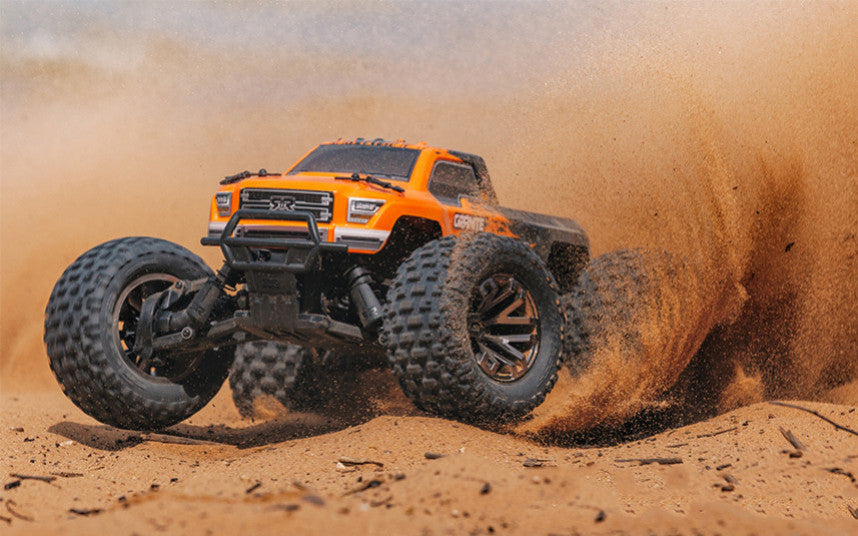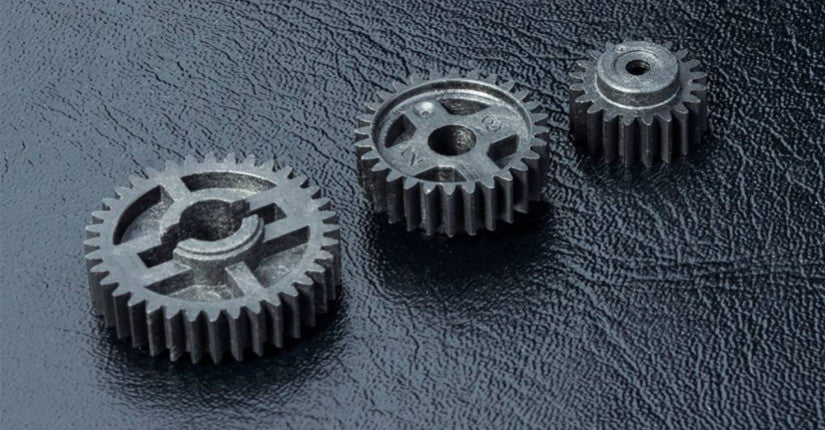To start the year on a good footing, we decided to take an interest in a rather little-known but essential mechanical system for your RC cars: the differential. All RC cars are equipped with a differential or even two or three if all four wheels are driven. What is the role of the differential? How does it work ? What is the best type of differential? How to choose the hardness of the oil? We have the answers.
What is a differential?
What is the role of a differential?
A differential is a component of the driveshaft that helps distribute power between the drive wheels of a radio-controlled car when the wheels are moving at different speeds. The name “differential” comes from the mechanism that compensates for the wheel speed differential. But why do the wheels move at different speeds?
If your car is driving in a straight line, the wheels will turn at the same speed but when the car turns, the outside wheels will travel a greater distance than the inside wheels. In a turn, the outside wheels must therefore turn faster than the inside wheels. The differential will allow the outside wheel to turn faster than the inside wheel and thus considerably reduce the turning radius , increase handling and increase the life of the tires .
Depending on whether the car is front-wheel drive or rear-wheel drive, the differential is at the front or rear. In the case of 4x4s (with four-wheel drive), we have a front differential, a different rear and the conductor: the central differential .
How does it work ?
So how does the differential “know” what to do? Little does he know, it's just a simple mechanical device consisting of a large ring gear flanked by two planet gears and up to 6 planet gears that distributes kinetic energy. Thanks to the differential, any acceleration of one wheel decelerates the other by an equal amount (and vice versa), so the average speed of the wheels will always be equal to the speed of the differential.
If the differential spins at 200 rpm and the car goes straight, both wheels spin at 200 rpm. But if you take a turn and the inside wheel slows down to 150 rpm, the outside wheel will spin to 250 rpm. If it slows down to 100 rpm, the outer wheel will spin at 300 rpm. And if you hold the inside wheel so it can't turn, the outside wheel will spin at 400 rpm. Thus, the average speed of the two wheels will always correspond to the speed of the differential .
What are the different types of differentials?
Differentials can be divided into two types: gear or ball. The key difference is how the gears work together. In the case of a pinion differential , the gears are equipped with teeth. In the case of a ball differential , the spacer gears are replaced by balls, and the output gears by flat rings. Each model has its advantages and disadvantages.
Advantages and disadvantages of a ball differential
Since it has no teeth, the ball differential transfers power to the wheels very smoothly and smoothly, even in very tight corners where the difference in speed between the right and left wheels is greatest . Traction on slippery surfaces is thus improved. It is also a lighter differential than the gear differential.
Advantages and disadvantages of a gear differential
Once assembled, the pinion differential requires less maintenance than the ball differential and can handle more power. Moreover, they are found on most cars with a powerful engine.
What is the role of oil in adjusting the differential?
We have just seen that the differential is used to transfer more power to one of the two wheels if necessary. Mechanically, the differential will distribute more power to the wheel that encounters the least resistance. To summarize, we can compare the action of a differential to lightning. This will always find the shortest path to reach the ground. In our case, the power generated by the engine will find, via the differential, the easiest way to turn the wheels.
The role of silicone oil is to stiffen the differentials . If the differential is free, that is to say without oil, light braking on one of the two wheels is enough to immobilize it and therefore to transfer all the power to the other wheel. By using a more or less viscous oil, we will be able to adjust the sensitivity of the differential .
The choice of oil in differentials
Which oil should I choose for my differentials?
We have seen that the hardness of the oil has a direct influence on the hardness of the differential . The hardness of the oil can be assessed using the indices: the higher the value, the harder the oil. For example, 10000 oil is harder than 5000 oil. The hardness of the oil will have an influence, among other things, on the behavior of the car in curves and on tire wear.
Here are some tips for choosing oil hardness :
- On the front differential , the thicker the oil, the more traction you have but the more you lose direction.
- On the central differential , the thicker the oil, the more traction and power you have on the rear axle but the more you lose direction and stability in bumps.
- On the rear differential , the thicker the oil, the more stability you have when accelerating but the more you lose traction and direction and stability when exiting corners.
What configuration should you prefer when starting out?
If you are starting with a car with TT 1/8 four-wheel drive, we recommend the following configuration:
- 7,000 at the front
- 10,000 in the center
- 3,000 at the back
Please note , there is no ideal configuration, it depends on the chassis, the type of differential, the type of terrain or even your driving.




